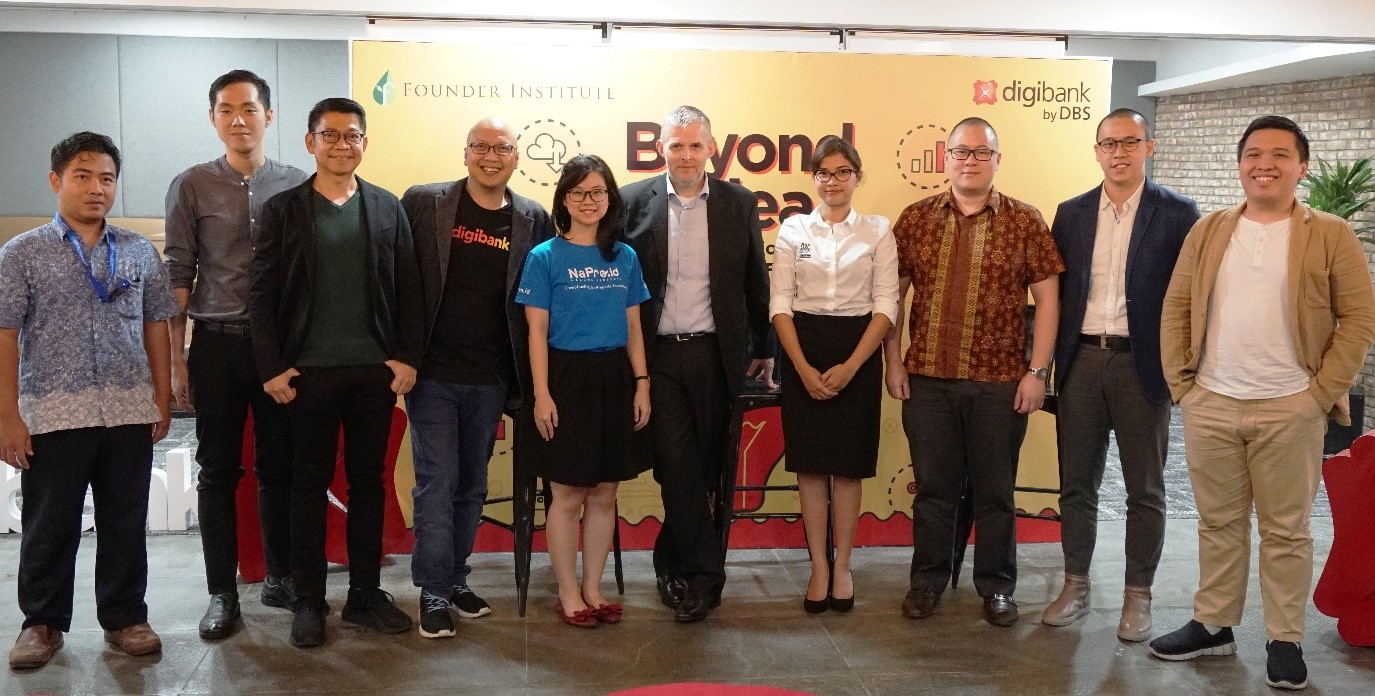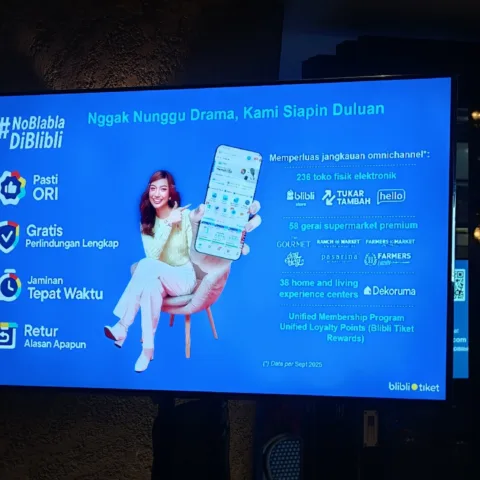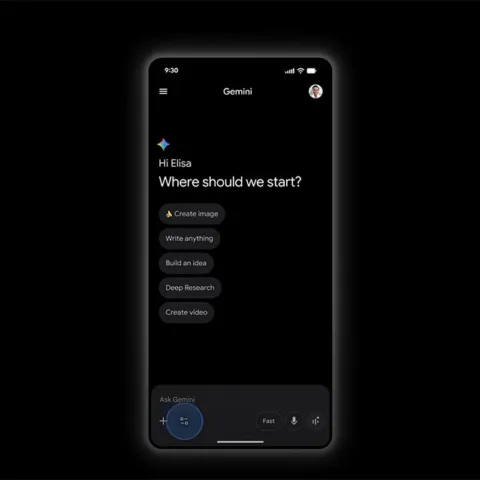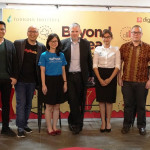 On January 18th, the Jakarta Founder Institute (JKFI) held an open session in Binus. This event is part of the JKFI program, a pre-seed incubator program run for 4 months. Participants follow this program with a curriculum needed in establishing and building a startup, training, feedback process and of course the network and the guidance from the experienced mentors both locally and internationally.
On January 18th, the Jakarta Founder Institute (JKFI) held an open session in Binus. This event is part of the JKFI program, a pre-seed incubator program run for 4 months. Participants follow this program with a curriculum needed in establishing and building a startup, training, feedback process and of course the network and the guidance from the experienced mentors both locally and internationally.
JKFI is still running until now. There are 8 startups and 13 founders who manage to survive among others such as Stilomo, iFetcha, Joint Venture, Partner Micro, Fokado, Socentix, Eductory, and Aibilities (formerly known andTechnology, a SparxUp Awards 2011 winner).
As written by Novistiar Rustandi, Director of the Jakarta Founder Institute via email, Demo day or Graduation Day event will be held on February 9th, 2012 while the next class will start on May 24, 2012. The new registration will be opened in February.
This open session event was attended by the students of JKFI and public participants. It presented four public speakers: Weihan Liu (previously at Nokia Venture) who is now developing game-startup, Andy Jobs (Chief Marketing Office Nexian), Eric Meijer (Esia) and teleconferences via Skype with Gabe Zicherman (Gamification.co). At the end of the event Izak Jenie from Nexian joined the question and answer session. I had the opportunity to see and hear presentations from the speakers but unfortunately I wasn’t able to follow the teleconference as I had to go back to Bandung. 😉
A yesterday open session took the theme about Marketing and Sales. The presentation explained sufficient details about sales steps and marketing. In my opinion, the essence from the show today was all about focus, research, analysis and execution.
Marketing programs should be arranged completely. Marketing isn’t just sales, pricing and promotion; marketing is a complete unity of all. One of the most important part of the marketing activities is about measuring performance results.
 Weihan Liu, one of the speakers at the event yesterday explained that one important part of marketing needed is startup metrics. Weihan took an example method from Dave McClure, AARRR!!! In this method, at least there are five things to take note (for the startup that has a relation with the costumers): Acquisition, Activation, Retention, Referral and Revenue.
Weihan Liu, one of the speakers at the event yesterday explained that one important part of marketing needed is startup metrics. Weihan took an example method from Dave McClure, AARRR!!! In this method, at least there are five things to take note (for the startup that has a relation with the costumers): Acquisition, Activation, Retention, Referral and Revenue.
From the fifth phase, the measurement of each stage should be considered. The example is for the user acquisition phases are: how to measure their habit, how long they stay on the site, where do they come from, do they register, are they happy to visit the sites, and others.
Measurement also depends on the business that is run by startup and the growth of startup itself. However, the measurements still must be performed any time.
As addition Weihan also explained that apart from mathematics, calculation, measurement or numbers elements; there are also non-mathematical factors, value and passion of the company. The example is Steve Jobs’ speech about Apple value and passion.
 An interesting presentation came from Andy Jobs. Anything about Nexian seemed to be always interesting especially about the branding and marketing. It began with a presentation about the jargon of branding which should have special traits, should be told and must deliver the message of the product or brand. Andy also used the example of Nexian, especially Nexian She with a Swarovski crystal endorsed by Maudy K.
An interesting presentation came from Andy Jobs. Anything about Nexian seemed to be always interesting especially about the branding and marketing. It began with a presentation about the jargon of branding which should have special traits, should be told and must deliver the message of the product or brand. Andy also used the example of Nexian, especially Nexian She with a Swarovski crystal endorsed by Maudy K.
He explained about how to choose product ambassador and offine programs advertisement on “below the line” and “above the line”. It’s all aligned in one message for the same branding.
The thing that can be learned is focus. The message should be very well-targeted. Certain startup would have to compete with existing companies especially if the services are similar or playing in the same segment and then delivering the right message. It’s simple but easy to understand and it’s very important thus the user/customer can clearly see the brand and the relation to the services offered by the startup. It could be also services and brands from startup.
Some other interesting presentation (I include some pictures within below article) is about being a follower. Nexian was originally a ‘follower’ and newcomer compare to many brands that have had long existency. However, with its massive movement and agile, Nexian is now becoming one of the major players in the local mobile industry.
The agility is one of the startup advantages. This should be fully utilized. In addition, finding the right partner can also help “a brand” to go. It’s about the movement of the early startup but certainly it’s including the development. The agility combined with making-things-above-the-average will increase the startup position in the competition.
Final presentation came from Eric Meijer of Esia. Esia is also one of the rising local brand in the mobile industry. Eric described about the positioning, one of the marketing element which is also important, not only for established firm but for the startup as well.
As a new company, the main thing is to determine the startup position in the customer’s life and mind. In this high level of competition, there are many choices and media for customers to seek the information and the costumers are getting smarter.
The founder or brand owner must make initial statements about their brands; who is the targeted customer; what is offered and what the reasons for consumers to use the services.
 In the positioning, research would be also important. For services that focus on costumers, there are a lot of data which can be extracted and obtained about what is needed by customer and their attachment to the brand. SWOT analysis can also be applied to obtain information as material execution.
In the positioning, research would be also important. For services that focus on costumers, there are a lot of data which can be extracted and obtained about what is needed by customer and their attachment to the brand. SWOT analysis can also be applied to obtain information as material execution.
In his presentation, Eric Meijer said that by doing a customer research, they also can find market segments, understand the costumer’s needs, discover the new trends, etc. (see picture).
The question may arise, how to do research? Is that expensive? Can the startup afford it? I once wrote about the research at DailySocial, it might be helpful. You can read it here and here. However, basically with the advance of internet, research seems now more likely to be done and the cost can be suppressed.
In the startup world, pivot or change direction is quite common. Eric also suggested some points when brand repositioning could be done: to enhance the competitive level, to extend the product life cycle, to refresh brand image, and to enter new market segments.
The positioning should be checked whether it is still relevant, up-to-date with consumer trends and their behavior or should be in-repositioning.
The interesting thing from the presentation today is about execution. Andy Jobs in his presentation mentioned that the retail market execution is important and for the product with ultimate focus is “the sale”, the demand is important. The brand idea must be connected to the local market which was translated in the campaigns and local activities.
Focusing on service needed by customer and solving problem as per current market are significant for this startup. As mentioned in the earlier post, some important things that must be considered among other startup are focused, research, analysis, and certainly (it could be the most important) the execution.
Disclosure: DailySocial is the media partner for the series of the activities held by Founder Institute.










